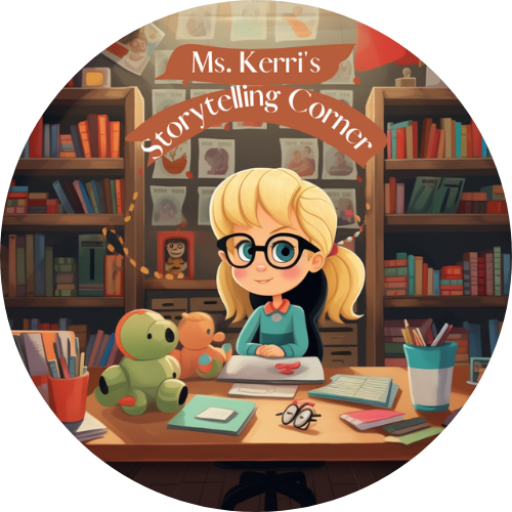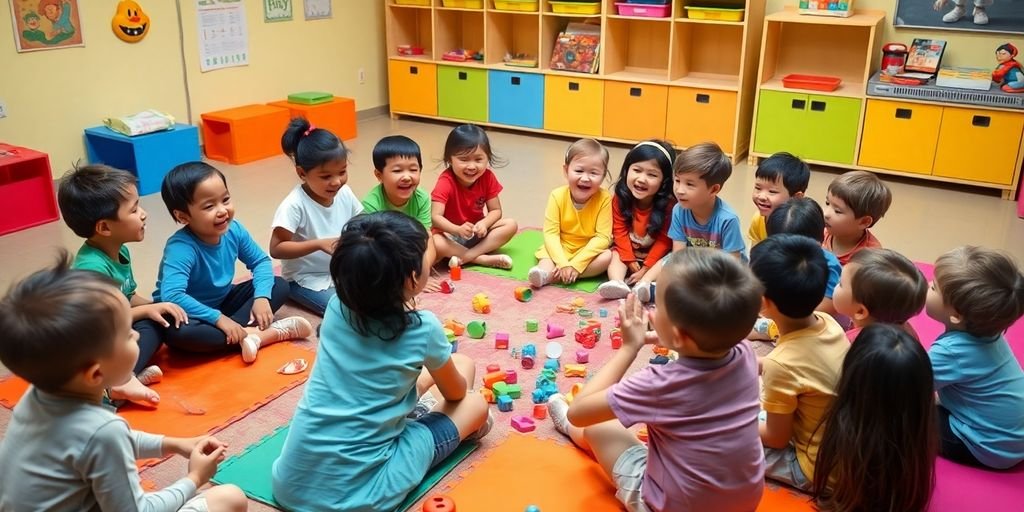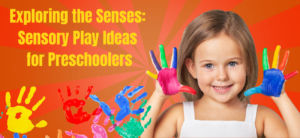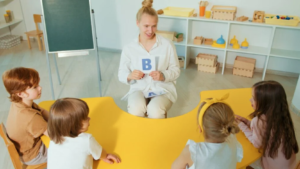Circle time can be a magical experience for kids if done right. It’s that special part of the day where little ones gather around, ready to learn and play. But let’s be honest, keeping them engaged isn’t always a walk in the park. If your circle time feels more like herding cats, maybe it’s time to shake things up a bit. From setting ground rules to introducing fun props, there are plenty of ways to capture their attention. Here are five circle time activities that might just do the trick.
Key Takeaways
- Establish clear circle time rules to create a respectful and orderly environment.
- Incorporate musical games to make learning fun and interactive.
- Use circle time to review the day’s activities and reinforce learning.
- Reading books during circle time can enhance language skills and imagination.
- Introduce thematic lessons with props to make learning tangible and exciting.
1. Set Circle Time Rules
Starting circle time with clear rules is key to a smooth session. Kids thrive on structure, and having a set of guidelines helps them know what to expect. Involving children in creating these rules can make them more invested in following them. Here’s how you can do it:
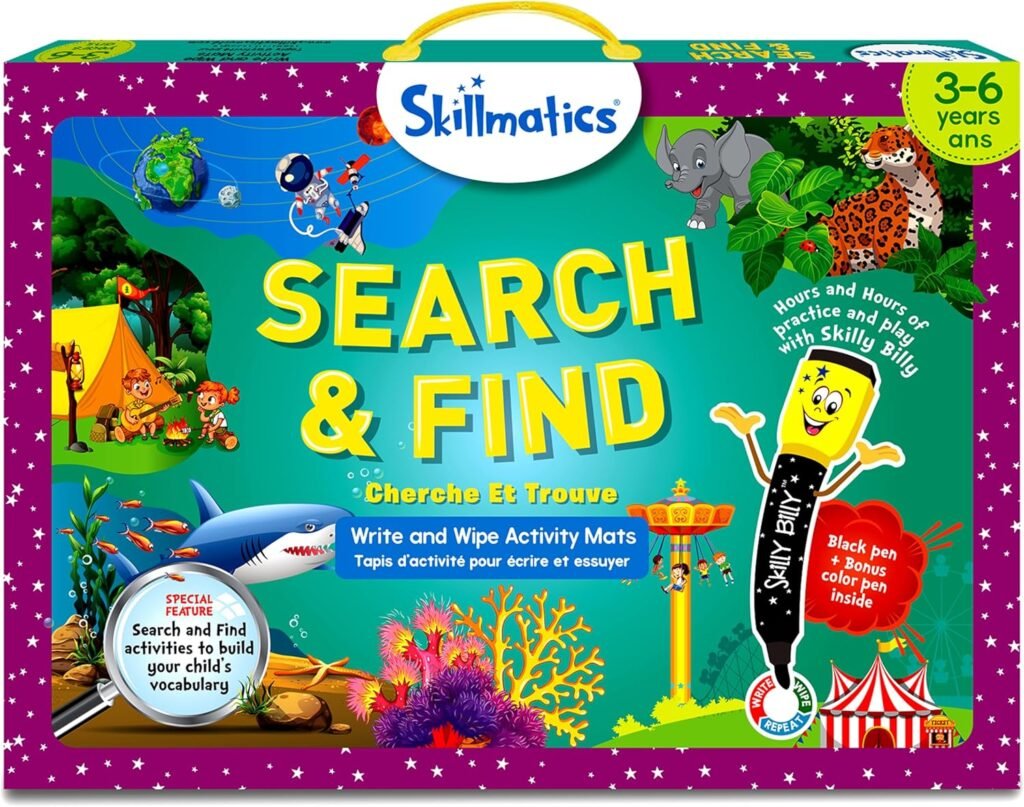
- Explain What Circle Time Is: Before jumping into rules, make sure the kids know why they’re sitting in a circle. Explain that it’s a special time to listen, share, and learn together.
- Brainstorm Together: Ask the kids what rules they think are important. You might be surprised by their ideas! Write them down so everyone can see.
- Keep It Simple: Use easy words and keep the list short. Five rules are plenty for young children.
- Be Consistent: Stick to the rules every time you have circle time. Consistency helps kids remember and respect the guidelines.
- Review Regularly: Spend a few minutes at the start of each session going over the rules. It reinforces them and sets the tone for the day.
Some good rules to consider might be:
- Raise your hand if you want to speak.
- Listen when someone else is talking.
- Take turns speaking.
- Feel free to pass if you don’t want to talk.
Setting these rules not only helps maintain order, but it also teaches kids about respect and cooperation. This way, circle time becomes a circle time activities that promote active participation among children, helping them learn each other’s names, share stories, and collaboratively establish group rules.
By involving kids in the rule-making process, you give them ownership and a sense of responsibility for their behavior during circle time. Plus, it makes the session more interactive and fun!
2. Play A Musical Game

Playing musical games during circle time is a fantastic way to get kids moving and grooving. It’s not just about having fun; these activities help with coordination, listening skills, and even teamwork.
How to Play Musical Games
- Choose Your Music: Start by picking a lively song that kids love. It could be a nursery rhyme or something upbeat and catchy. The key is to keep the energy high.
- Explain the Rules: Before you hit play, explain the game’s rules. Whether it’s freeze dance or passing a plush toy, make sure everyone knows what to do when the music stops.
- Get Moving: Encourage the kids to dance or move around. Let them express themselves freely, but keep an eye on safety.
- Pause for Fun: When the music stops, everyone freezes or performs a specific action. This pause adds a fun challenge and keeps kids on their toes.
Variations to Try
- Freeze Dance: Kids dance when the music plays and freeze when it stops. You can add challenges like freezing in funny poses.
- Pass the Plush: Pass a plush toy around the circle. When the music stops, the child holding the toy might perform a dance or answer a fun question.
- Animal Dance Off: Assign each child an animal. When the music plays, they dance like their animal. It’s silly and fun!
Playing musical games is more than just a fun activity; it’s a way for kids to express themselves, learn about rhythm, and enjoy moving their bodies. Plus, it’s a great way to burn off some energy!
Incorporating musical games into your circle time can make it an unforgettable experience for children, fostering both their creativity and their enthusiasm for learning.
3. Review The Day’s Activities
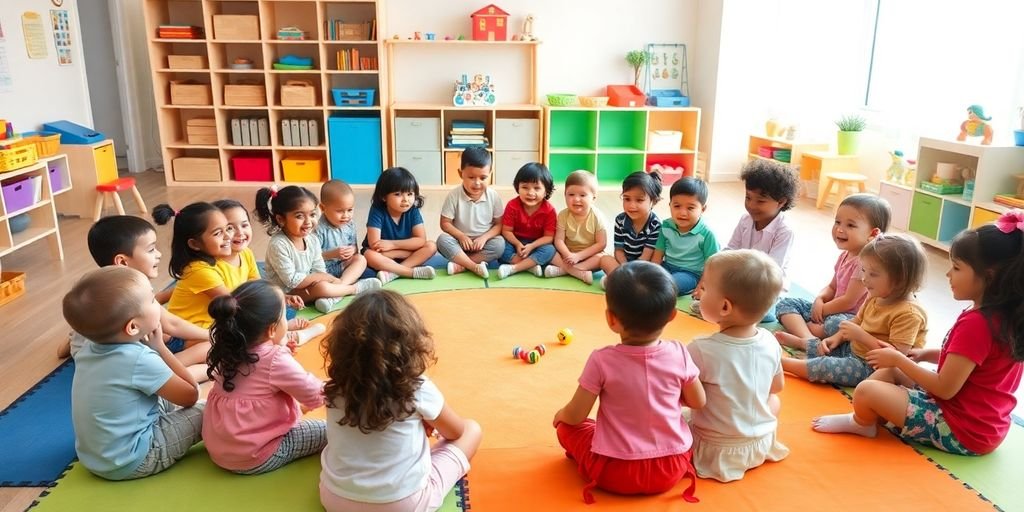
At the end of a busy school day, circle time is a great moment to reflect on what the kids have learned. It’s a chance for them to share their thoughts and for you to see what really caught their interest. Here’s how you can make this time both fun and meaningful:
- Share Favorites: Invite each child to talk about their favorite part of the day. It could be a game they played, a story they heard, or even a new friend they made. This not only helps them remember what they did, but also boosts their expressive language skills.
- Reflect and Discuss: Encourage a short discussion on what went well and what could be improved. This helps kids think critically about their day and learn how to express their thoughts constructively.
- Preview Tomorrow: Give a sneak peek into what’s coming up next. This can help kids feel excited and prepared for the following day, reinforcing routine and expectations.
Taking a few minutes to look back on the day can make a big difference in how children process and retain information. It’s a simple yet powerful way to wrap up the day on a positive note.
4. Read Books

Reading books during circle time is a fantastic way to engage young minds. Books are magical portals that transport kids into different worlds, sparking their imagination and curiosity. When you read aloud, you’re not just sharing a story, you’re introducing new words and ideas. Kids get to hear different voices and rhythms, which helps them learn language in a fun way.
To make storytime even more exciting, try these tips:
- Change your voice for different characters. Kids love it when you become a grumpy bear or a squeaky mouse.
- Use props. If you’re reading about a farm, bring in toy animals.
- Encourage kids to join in. Ask them to roar like a lion or flap their arms like a bird.
Storytime isn’t just about reading; it’s about creating a shared adventure. Each book is a chance to explore new places and meet new friends, all from the comfort of your circle.
Interactive reading can make a huge difference. You can ask questions about the story or let kids predict what happens next. This keeps them engaged and thinking. Plus, it’s a great way to build their confidence in speaking up and sharing their thoughts.
Remember, the goal is to make reading a joy, not a chore. Let the kids pick books they’re interested in, and don’t be afraid to read the same story multiple times. Repetition is key to learning, and kids often find comfort in familiar tales.
Reading books during circle time is more than just a routine; it’s a way to connect with kids and nurture a lifelong love of reading.
5. Introduce A Short Thematic Lesson With Props

Props can make any lesson more exciting and memorable for kids. They help bring abstract concepts to life, making learning tangible and fun. Here’s how you can introduce thematic lessons with props during circle time:
- Choose a Theme: Start by picking a theme that aligns with your current curriculum or something the kids are curious about. It could be anything from insects to outer space.
- Gather Props: Collect items related to your theme. If you’re exploring the ocean, bring seashells, a small model of a boat, or even a magnifying glass to “discover” hidden treasures in a sandbox.
- Interactive Discussion: Use the props to spark curiosity and discussion. Pass around the items, let each child hold them, and ask questions like “What do you think this is?” or “How does it feel?”
- Hands-On Activity: Engage the kids in a simple activity using the props. For an alphabet theme, you could have a box filled with objects that start with different letters and ask the children to identify them.
- Wrap-Up: Conclude with a quick recap of what they learned, emphasizing the connection between the props and the theme.
A thematic lesson with props not only captures attention but also enhances understanding by linking physical objects to educational concepts.
Remember, the key is to keep it short and sweet, ensuring every child stays engaged and has a chance to participate.

Conclusion
Wrapping up, circle time is more than just a routine; it’s a chance to connect, learn, and have fun together. By mixing in different activities, you can keep the kids interested and eager to join in. Whether it’s through songs, games, or storytelling, each session can be a new adventure. Remember, the key is to keep it light and engaging. With a bit of creativity and flexibility, circle time can become a highlight of the day for both you and the kids. So go ahead, try out these ideas, and watch as your circle time transforms into a lively and joyful experience!
Frequently Asked Questions
What is circle time?
Circle time is a fun and interactive group activity for kids where they gather in a circle to learn, play games, sing songs, and share stories.
How long should circle time last?
Circle time should be short and engaging, typically lasting around 15-20 minutes to keep kids interested.
What are some good circle time activities?
Some great circle time activities include singing songs, reading books, playing musical games, and having themed lessons with props.
How can I make circle time more engaging?
To make circle time more engaging, use a variety of activities, incorporate movement, and use props or visuals to capture kids’ attention.
Why are circle time rules important?
Circle time rules help create a respectful and orderly environment where everyone gets a chance to participate and be heard.
Can circle time help with social skills?
Yes, circle time can help kids develop social skills by encouraging them to communicate, take turns, and listen to others.


Ms. Kerri’s Corner provides a exciting virtual space for preschool learning. Through a variety of engaging activities, she exposes young minds to early math, literacy, science and social-emotional skills in a developmentally appropriate way. Centers for blocks, art, books and music allow children to explore hands-on learning at their own pace. Guided lessons subtly introduce number sense, letter sounds and narrative thinking. Careful observation gives insight into each child’s progress across domains. Viewers are also invited to participate, reinforcing that their ideas are valued. By making learning fun yet purposeful, Ms. Kerri lays the groundwork for future academic success while fostering creativity and imagination. Her program offers preschoolers valuable screen-based learning experiences.
